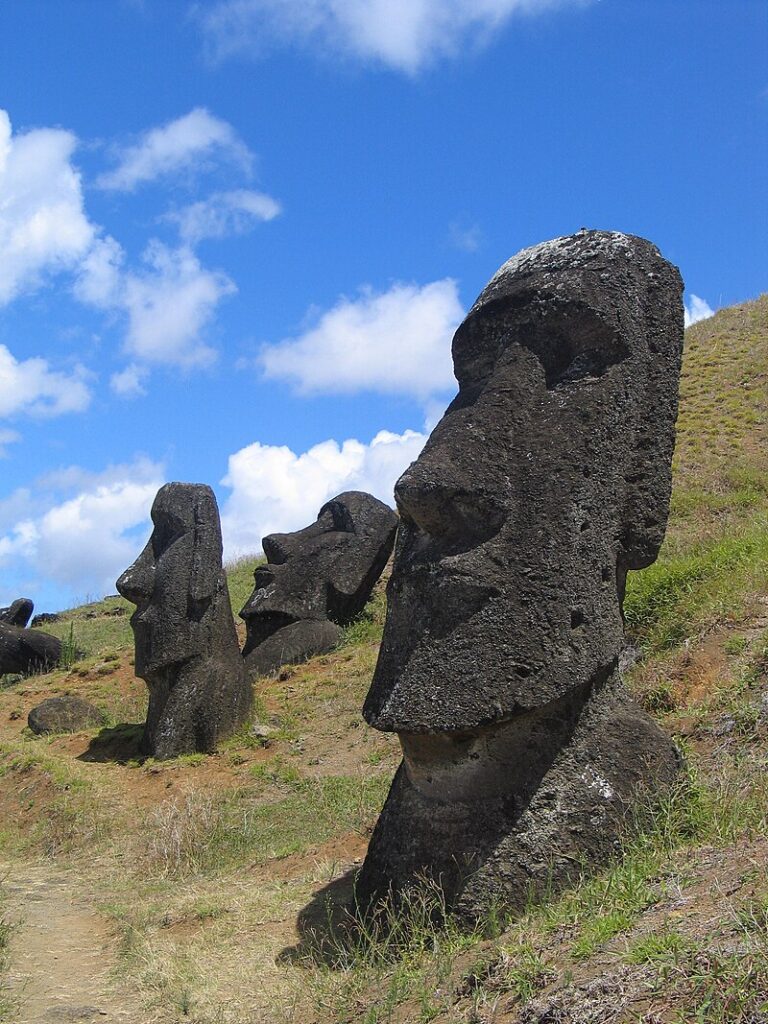Easter Island, also called Rapa Nui in the native tongue, is a small volcanic island in the southeastern Pacific Ocean. It is famous for its large, mysterious stone statues called moai, which were created by the island’s people many centuries ago. Easter Island belongs to Chile, but it is over 2,000 miles away from the South American coast.
There are about 900 moai statues on the island, some up to 33 feet (ca. 10 m) tall. The Rapa Nui people built these statues to honour their ancestors. Historians and scientists still don’t know how the natives moved and raised the heavy stones.
The first inhabitants of Easter Island were farmers. However, as time went on, they cut down too many trees and ran out of resources. When Europeans arrived in the 1700s, life on the island changed even more.
Today, Easter Island is a UNESCO World Heritage Site. Travellers from all over the world come to see its scenic landscapes and ancient statues. The people of Rapa Nui are proud of their special culture and work hard to keep their traditions alive.

Statues on Easter Island
Image:By Aurbina – Own work, Public Domain, Link
Words
- ancestor = a member of your family who lived a long time ago
- ancient = very old
- century = a period of a hundred years
- create = make
- historian = a person who studies history
- inhabitants = here: the people who live on the island
- natives = the people who lived there at the beginning
- native tongue = the language that you first learn to speak
- resources = important things that you need to live, like food, wood, clothes etc..
- scenic = beautiful countryside
- scientist = a person who studies science and works in a lab
- World Heritage Site = a place that is very important to a country’s culture and protected by the UN